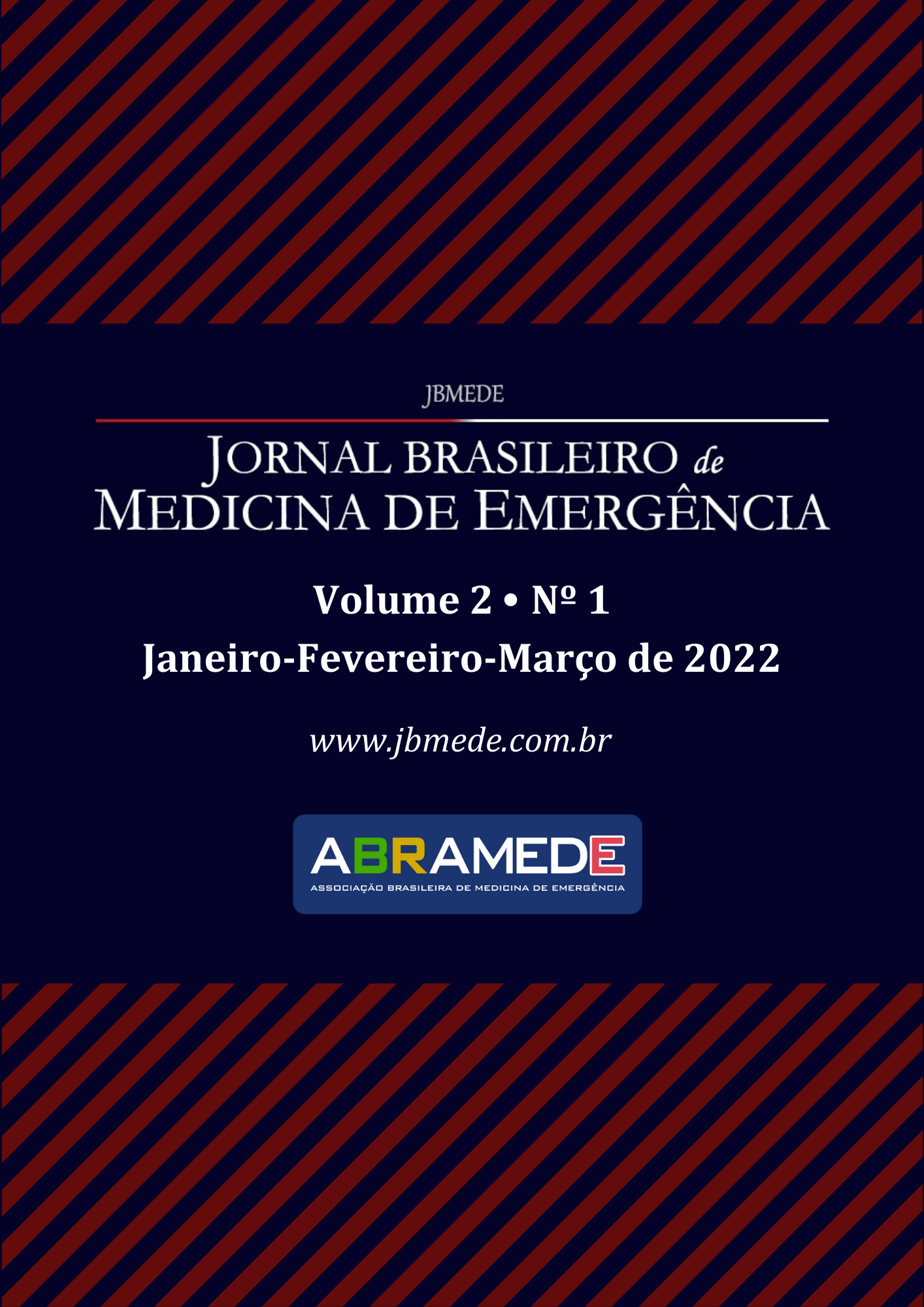Contraindications and complications of the use of non-invasive ventilation in the Emergency Department: Literature Review
Main Article Content
Abstract
Introduction: A NIV consists of pressurizing like airways using an external patient-ventilator interface. Understanding that NIV is an important ventilatory support strategy, it becomes relevant to identify possible contraindications and complications of this technique. The objeticve of this study is to carry out a literature review, selecting works that address as contraindications and complications of NIV in the Emergency Department.
Method: Scientific articles published in the last 10 years were selected, using national and international sources, with the following search strategy: (NIV OR non-invasive OR non-invasive OR artificial) AND (ventilation OR breathing OR breathing) AND positive AND pressure AND emergency AND (contraindication OR complication), in English and Portuguese.
Results: 22 articles were responded to the search strategy. Of these, 13 were eliminated, restoring 9 articles for review.
Conclusions: A NIV can lead to a cardiovascular system collapse when not performed. Patients with altered mental status are considered contraindicated to NIV and it is recommended that it not be performed in patients with Glasgow Coma Scale less than 10.34. Other problems related to NIV are reduced salivation, air leakage, lack of synchronization between the patient and the artificial ventilation device, pressure ulcer training related to the respiratory interface itself, as well as gastric discomfort and distension.
Article Details

This work is licensed under a Creative Commons Attribution 4.0 International License.
References
ALLISON, M. G.; WINTERS, M. E. Noninvasive Ventilation for the Emergency Physician. Emergency Medicine Clinics of North America, v. 34, n. 1, p. 51–62, 2016.
BAMBI, S. et al. Noninvasive ventilation: open issues for nursing research. Acta Bio-Medica: Atenei Parmensis, v. 88, n. 1S, p. 32–39, 2017.
BARBAS, C. S. V. et al. Recomendações brasileiras de ventilação mecânica 2013. Parte I. Revista Brasileira de Terapia Intensiva, v. 26, n. 2, p. 89–121, 2014.
BEIN, B.; FRANCKSEN, H.; STEINFATH, M. Supraglottic airway devices. Anasthesiologie, Intensivmedizin, Notfallmedizin, Schmerztherapie: AINS, v. 46, n. 9, p. 598–607, 2011.
CARVALHO, C. R. R. DE; TOUFEN JUNIOR, C.; FRANCA, S. A. Ventilação mecânica: princípios, análise gráfica e modalidades ventilatórias. Jornal Brasileiro de Pneumologia, v. 33, n. suppl 2, p. 54–70, 2007.
CRUZ, M. R.; ZAMORA, V. E. C. Ventilação mecânica não invasiva. Brazilian Journal of Health and Biomedical Sciences, v. 12, n. 76, p. 92–101, 2013.
FERREIRA, S. et al. Ventilação não invasiva. Revista Portuguesa de Pneumologia, v. 15, n. 4, p. 655–667, 2009.
MORTARI, D. M. et al. Prevalência de pacientes com indicação para uso de ventilação mecânica não-invasiva em uma unidade de emergência. Revista da Faculdade de Ciências Médicas de Sorocaba, v. 12, n. 1, p. 13–16, 2010.
MOSIER, J. M. et al. Failed noninvasive positive-pressure ventilation is associated with an increased risk of intubation-related complications. Annals of Intensive Care, v. 5, p. 4, 2015.
OTO, J.; IMANAKA, H.; NISHIMURA, M. Clinical factors affecting inspired gas humidification and oral dryness during noninvasive ventilation. Journal of Critical Care, v. 26, n. 5, p. 535.e9-535.e15, 2011.
PASSARINI, J. N. DE S. et al. Use of non-invasive ventilation in acute pulmonary edema and chronic obstructive pulmonary disease exacerbation in emergency medicine: predictors of failure. Revista Brasileira De Terapia Intensiva, v. 24, n. 3, p. 278–283, 2012.
RAHAL, L.; GARRIDO, A. G.; CRUZ JR, R. J. Ventilação não-invasiva: quando utilizar? Revista da Associação Médica Brasileira, v. 51, n. 5, p. 245–246, 2005.
RIARIO-SFORZA, G. G. et al. Role of noninvasive ventilation in elderly patients with hypercapnic respiratory failure. La Clinica Terapeutica, v. 163, n. 1, p. e47-52, 2012.
SCHETTINO, G. P. P. et al. Ventilação mecânica não invasiva com pressão positiva. Jornal Brasileiro de Pneumologia, v. 33, n. 2, p. 92–105, 2007.
SIDDIQUI, F. M. et al. An unusual contraindication to the use of non-invasive ventilation in A&E. Emergency medicine journal: EMJ, v. 27, n. 8, p. 615, 2010.
SUZUKI, Y.; TAKASAKI, Y. Respiratory support with nasal high-flow therapy helps to prevent recurrence of postoperative atelectasis: a case report. Journal of Intensive Care, v. 2, n. 1, p. 3, 2014.

